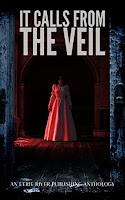The Inner Art of Karate: Cultivating the Budo Spirit in Your Practice by Kenji Tokitsu
Note from 2021: I note in the review that I have not read many books about martial arts. I have in the years since worked to rectify this and hope to start writing more discussions/reviews of those topics on this blog.
Original Review from 2015:
Despite having studied
martial arts for over a decade, I have not read many books on the topic.
I think this was because most of that time overlapped university, which
ate up most of my reading time and when I was given some, non-fiction
was the last thing I wanted to read. I’ve only just started to correct
this. I mention this background to clarify that this is essentially a
new genre for me and my review may be lacking.
The Inner Art
of Karate is not a “how to” fight book or anything of the sort. The
author focuses on the mental side of karate that can easily be forgotten
in among the ridiculous crane kicks and shiny trophies. He does discuss
the physical aspects, but sticks to more of the ideas behind combat
techniques rather than the proper way to make a fist or which way to
point your toes when you kick.
This book offers a good
introduction to some of the principles of karate and had some good
advice about how to fight an adversary. A fight between opponents is
about more than just the physical aspect of hitting each other –
strategy and awareness play a role. While I found some of the terms
Tokitsu used confusing and his diagrams were difficult to interpret, I
found his suggestions for combat useful and logical. Examples include:
your blocks should be counterattacks as well as blocks, anticipating the
strike before it comes, and so on. He also offers an excellent
discussion about distance and timing when facing an opponent.
The
two most interesting parts of the book for me were when he discussed
the idea of cadence and when he describe the teaching of ancient sword
masters. Each confrontation has a certain cadence or rhythm to it and
the conflict can be won through control and variance of this cadence.
The section on the ancient masters wraps up the text well and reminds
the read of the deep tradition inherent in martial arts.
There
was one thing that Tokitsu kept doing in the text that bothered me –
hating on “the West”. Maybe it’s because I’m from “the West” but I found
his constant comments about Japanese vs. Western culture irksome –
especially since it was clear which one he thought was better. The book
was far from offensive and yes, some Western schools have turned a
martial art into a martial sport, but he seemed to lump the entire West
under one umbrella and that is a bit problematic. The benefit of this
issue was a window into Japanese culture and concepts of diligence and
awareness.
Tokitsu’s book was a good beginning for some of
the philosophical concepts of karate. It’s a quick read and with a few
exceptions, keeps the technical language at a layman level.

Comments
Post a Comment